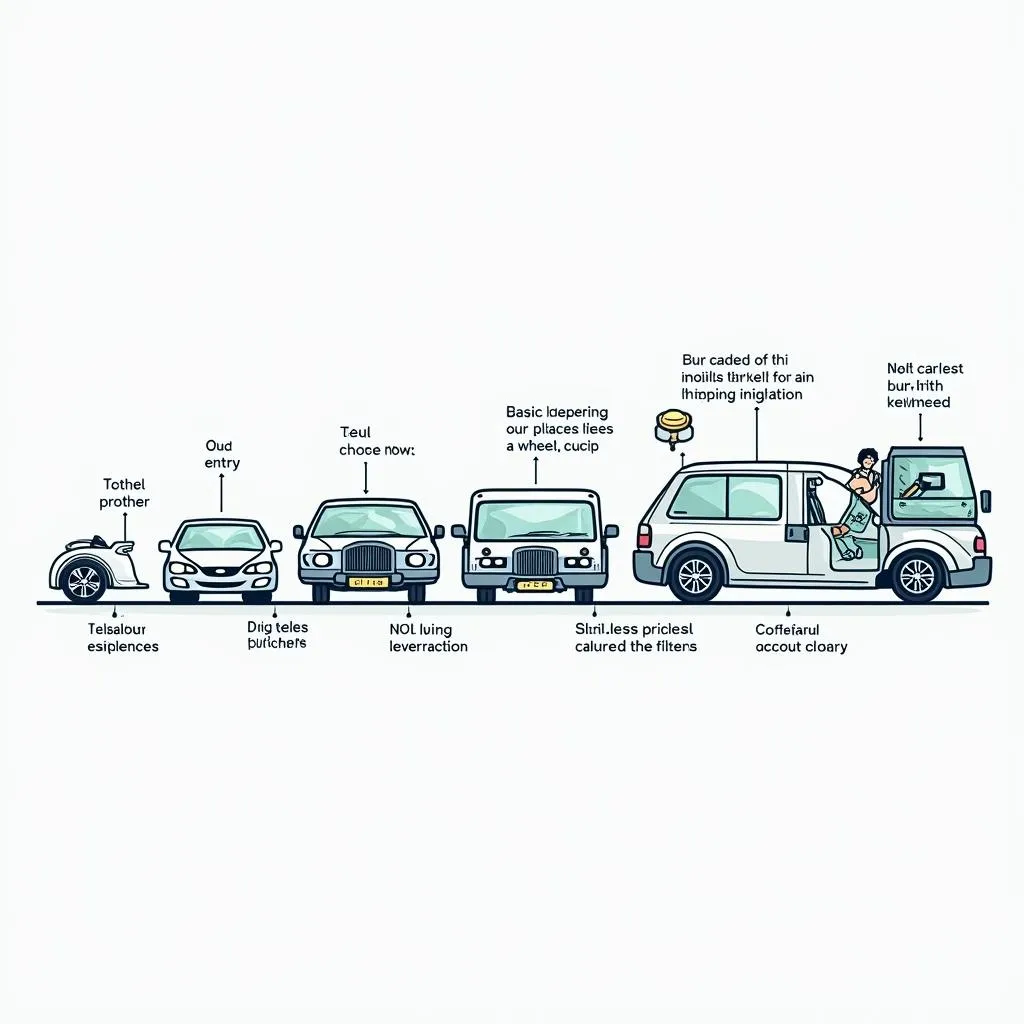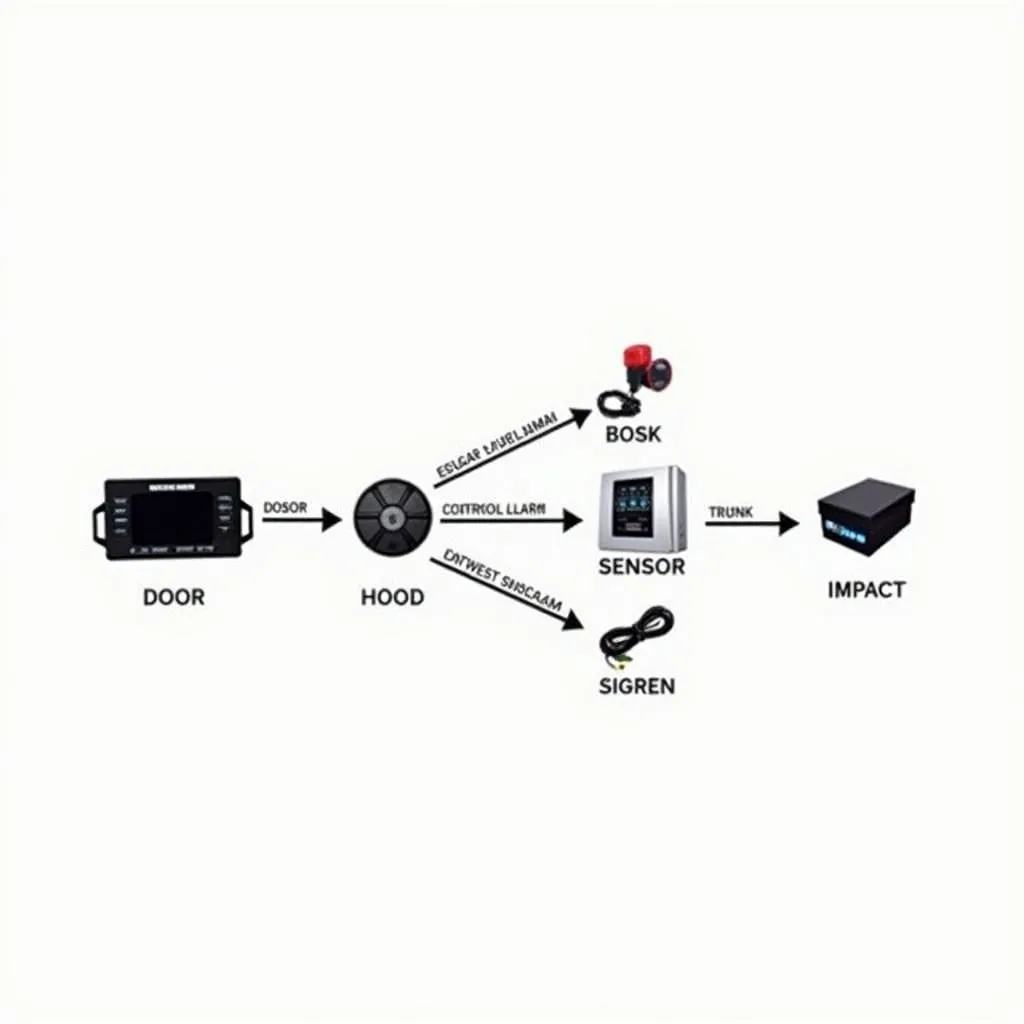A modern car is a technological marvel, and a key part of that technology is its anti-theft system. But have you ever stopped to wonder “how does an anti-theft system work in cars?”. It’s more than just a flashing light on your dashboard! This system is your car’s silent guardian, a complex network of electronics designed to deter thieves and keep your vehicle safe. Let’s delve into the fascinating world of car security and unravel the mysteries behind those clever anti-theft mechanisms.
Understanding the Basics: The Brain and the Brawn
At its core, a car’s anti-theft system operates on a simple principle: to prevent unauthorized access and operation. It achieves this through a combination of:
1. Immobilization: This feature disables crucial components like the engine, starter, or fuel system, making it impossible to start the car without the correct key.
2. Alarms: A piercing siren and flashing lights are the hallmarks of any good car alarm. They serve as a strong deterrent and alert you and others nearby to potential theft.
How Anti-Theft Systems Have Evolved
Remember the days when a simple metal rod locked your steering wheel? Thankfully, anti-theft technology has come a long way since then. Let’s take a quick look at the evolution of these systems:
- First Generation: Basic alarms and central locking systems with remote keyless entry.
- Second Generation: Introduction of immobilizers using transponder chips embedded in keys.
- Third Generation: More advanced immobilizers, GPS tracking, and two-way communication with key fobs for enhanced security.
 Evolution of Car Anti-Theft Systems
Evolution of Car Anti-Theft Systems
Delving Deeper: How Common Anti-Theft Components Work
Here’s a closer look at some key components that make up modern anti-theft systems:
1. Immobilizer System
This system centers around the transponder chip embedded in your car key. When you insert the key or bring a keyless fob near the ignition, the system’s antenna reads the chip’s unique code.
- If the code matches: The immobilizer disengages, allowing the engine to start.
- If the code doesn’t match: The immobilizer remains active, preventing the engine from starting. This is why a simple metal key won’t work in modern cars – the system won’t recognize it, effectively stopping thieves in their tracks.
2. Alarm System
The car alarm system is your first line of defense. It usually consists of:
- Sensors: Door, hood, and trunk sensors detect unauthorized entry. Shock sensors detect impacts or attempts to tow the vehicle.
- Siren: A loud siren activates when the sensors are triggered.
- Control Unit: This unit receives signals from the sensors and controls the siren and lights.
 Components of a Car Alarm System
Components of a Car Alarm System
3. Remote Keyless Entry
Remote keyless entry systems provide convenience and security. They use radio waves to allow you to lock, unlock, and even start your car remotely.
Common Issues and Troubleshooting
Like any electronic system, anti-theft systems can experience issues. Some common problems include:
- Dead key fob battery: This can prevent you from locking/unlocking your car or even starting it if you have keyless ignition.
- Faulty sensors: Malfunctioning door, hood, or impact sensors can trigger false alarms or prevent the alarm from arming.
- Immobilizer issues: A faulty immobilizer system can prevent your car from starting even with the correct key.
If you’re experiencing problems with your car’s anti-theft system, it’s always best to consult a qualified automotive electrician or take your car to a trusted mechanic. Specialized diagnostic tools are often needed to pinpoint the issue accurately.
FAQs About Car Anti-Theft Systems
1. Can I install an aftermarket anti-theft system in my car?
Yes, many aftermarket anti-theft systems are available, offering various features like GPS tracking and smartphone integration. However, it’s crucial to choose a reputable brand and have it professionally installed to avoid potential conflicts with your car’s existing electronics.
2. Can I disable my car alarm temporarily?
Most cars allow you to disable the alarm temporarily, usually through a combination of button presses on your key fob or a switch inside the vehicle. Refer to your owner’s manual for specific instructions.
3. What should I do if my car alarm goes off accidentally?
If your car alarm goes off accidentally, try disarming it using your key fob. If this doesn’t work, you may need to disconnect the battery temporarily.
4. Can a car be stolen even with an anti-theft system?
While anti-theft systems significantly reduce the risk of theft, determined thieves can still find ways to bypass them. It’s crucial to remain vigilant, park in well-lit areas, and consider additional security measures like steering wheel locks or GPS trackers.
 Car Theft Prevention Tips
Car Theft Prevention Tips
Cardiagtech: Your Partner in Automotive Diagnostics and Repair
Understanding your car’s anti-theft system is essential for ensuring its security. But sometimes, diagnosing and resolving issues requires specialized knowledge and tools.
That’s where Cardiagtech comes in. We offer a range of advanced diagnostic products and services to help mechanics and car enthusiasts troubleshoot and repair automotive electronic systems, including anti-theft systems, with precision.
Connect with CARDIAGTECH today to learn more about our products and how we can help you keep your car safe and secure.

